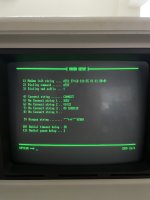Anonymoose
Member
- Joined
- Feb 19, 2024
- Messages
- 45
Heyo,
I have a Practical Peripherals PM9600 (V.32/V.42bis) and I’m not entirely sure how to use it? I can’t find much about it on the internet and don’t know what settings to choose for it. I’ve seen many different modem init strings and the default settings of baud rate:9600, data bit:8, stop bit:1, and parity:none still give me a BUSY signal after calling any BBS. Then again, there could be other things wrong, but I’m not sure. I’m using Procomm 2.4.3 if that helps out anyone. Thanks
I have a Practical Peripherals PM9600 (V.32/V.42bis) and I’m not entirely sure how to use it? I can’t find much about it on the internet and don’t know what settings to choose for it. I’ve seen many different modem init strings and the default settings of baud rate:9600, data bit:8, stop bit:1, and parity:none still give me a BUSY signal after calling any BBS. Then again, there could be other things wrong, but I’m not sure. I’m using Procomm 2.4.3 if that helps out anyone. Thanks

